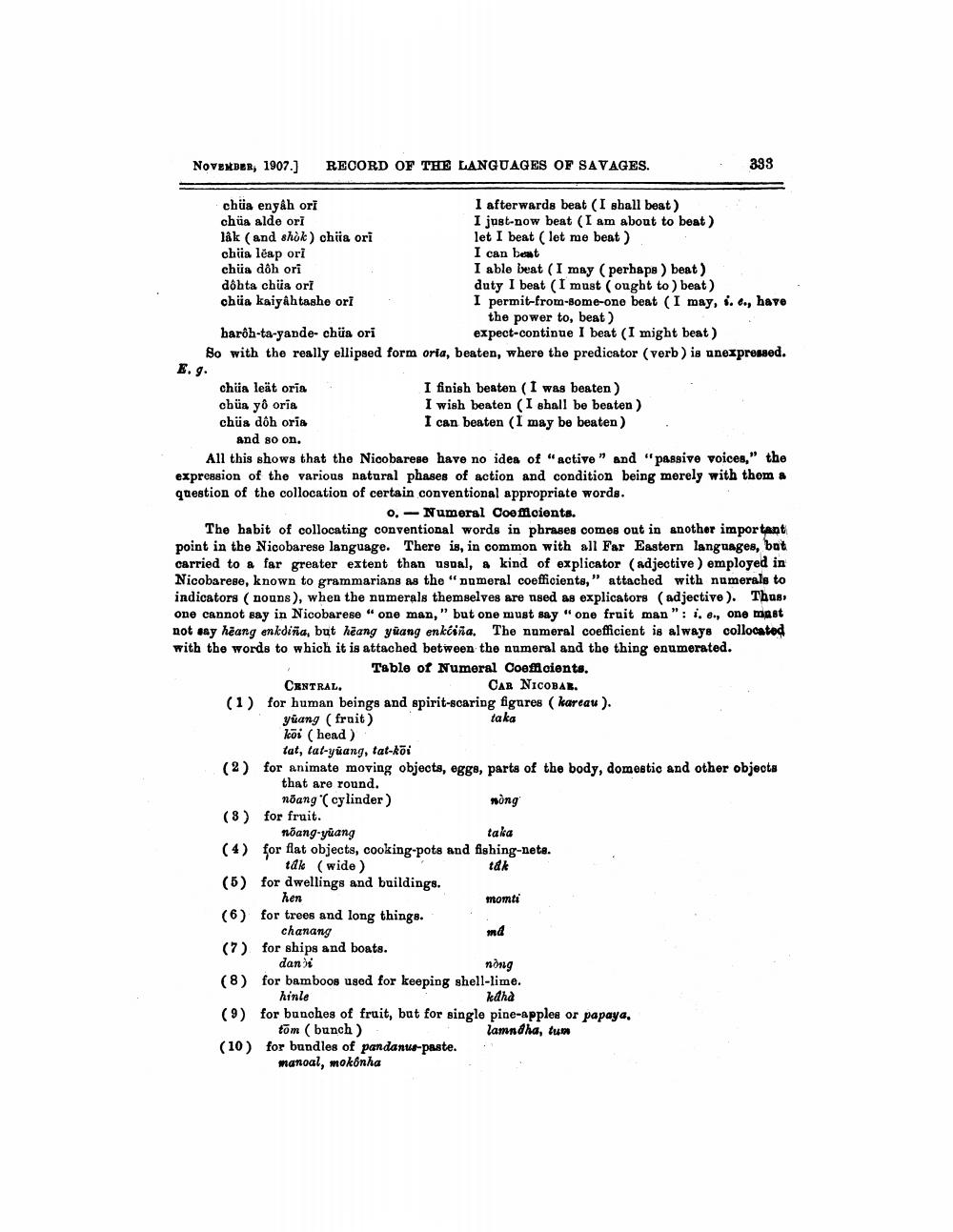________________
November, 1907.)
RECORD OF THE LANGUAGES OF SAVAGES.
333
chüa enyah ori
I afterwards beat (I shall beat) chüa alde ori
I just-now beat (I am about to beat ) lâk (and shok) chiia ori
let I beat ( let me beat ) chüa leap ori
I can beat chüa dôh ori
I able beat (I may perhape ) beat ) dohta chüa ori
duty I beat (I must ought to ) beat) chüa kaiyahtashe ori
I permit-from-some-one beat (I may, 6. o., have
the power to, beat ) barôh-ta-yande-chüa ori
expect-continue I beat (I might beat) So with the really ellipsed form oria, beaten, where the predicator (verb) is anexpressed.
E. g.
chüa leät oria
I finish beaten (I was beaten) chüa yô oria
I wish beaten (I shall be beaten) chüs dôh oria
I can beaten (I may be beaten) and so on. All this shows that the Nicobarese have no idea of "active" and "passive voices," the expression of the various natural phases of action and condition being merely with them a question of the collocation of certain conventional appropriate words.
0.- Numeral Coefficients. The habit of collocating conventional words in phrases comes out in another important point in the Nicobarese language. There is, in common with all Far Eastern languages, but carried to a far greater extent than usual, a kind of explicator (adjective) employed in Nicobarese, known to grammarians as the "pomeral coefficiente," attached with numerals to indicators (nouns), when the numerals themselves are nsed as explicators (adjective). Thus, one cannot say in Nicobarese "one man," but one must say "one fruit man": 1. e., one mast not say heang enkdiña, but heang yuang enkciña. The numeral coefficient is always collocated with the words to which it is attached between the numeral and the thing enumerated.
Table of Numeral Coeficients. CENTRAL
CAR NICOBAR. (1) for human beings and spirit-scaring figures (karcau ). yūang (fruit)
taka koi (head)
tat, tat-yuang, tat-kõi (2) for animate moving objects, eggs, parts of the body, domestic and other objects
that are round.
nõang'( cylinder) (8) for fruit. nõang-yuang
taka (4) for flat objects, cooking-pots and fishing-nete. tak (wide)
tdk (5) for dwellings and buildings. hen
momti (6) for trees and long things. chanang
md (7) for ships and boats. danji
nong (8) for bamboos used for keeping shell-lime. hinle
kdha (9) for bunches of fruit, but for single pine-apples or papaya, tom (bunch) :
lamndha, tum (10) for bundles of pandanus-paste.
manoal, mokonha
wòng




